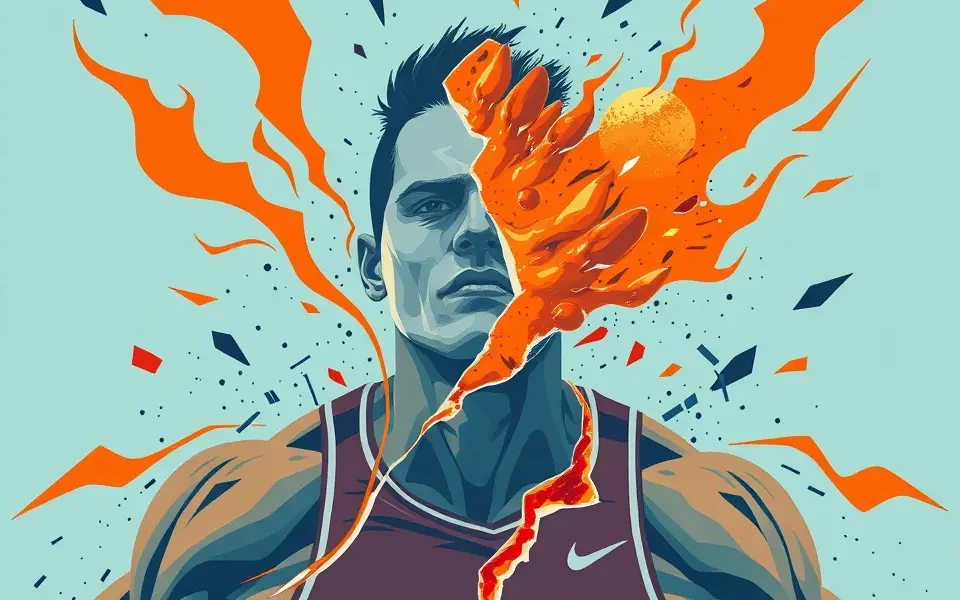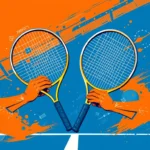Coco Gauff, the young American tennis sensation, has captured the hearts of fans worldwide with her electrifying athleticism, powerful serve, and undeniable mental fortitude. However, even the brightest stars have their Achilles’ heel, and for Gauff, it’s a weakness that’s been the subject of much scrutiny and analysis. A former world No. 1 has recently delivered a rather blunt assessment of this perceived flaw, sparking fresh debate about its impact on Gauff’s quest for continued Grand Slam glory. What is this “unheard of” weakness, and how might it affect her future?
The Elephant in the Court: Gauff’s Forehand
The weakness in question? Coco Gauff’s forehand. This isn’t exactly breaking news to keen tennis observers. For years, analysts and commentators have pointed to her forehand as the most vulnerable part of her game, a chink in her armor that opponents can exploit. While Gauff possesses incredible speed, a booming serve, and a rock-solid backhand, her forehand has, at times, appeared inconsistent and prone to errors, particularly under pressure.
A Recurring Theme
The struggles with her forehand aren’t new. As early as 2023, commentators noted the issues, especially in big matches like the 2022 French Open final against Iga Swiatek. The errors often come at crucial moments, turning potential winners into costly mistakes. Despite working on it, dramatic improvements haven’t always been evident. While it has become more stable, it’s still seen as a potential liability.
In early 2025, after a loss to McCartney Kessler in Dubai, it was noted that 77% of her unforced errors came off the forehand wing. She racked up 34 forehand unforced errors while only managing five winners. These numbers highlight the extent of the problem and why it remains a focal point in discussions about her game.
Why All the Fuss?
In modern tennis, a reliable forehand is practically a non-negotiable asset. It’s the bread-and-butter shot for dictating play, hitting winners, and controlling the court. When a player’s forehand becomes a liability, it allows opponents to target that weakness relentlessly, disrupting their rhythm and putting them on the defensive.
The Brutal Verdict: What Was Said?
While the specific identity and exact words of the former world No. 1 remain somewhat shrouded, the sentiment is clear: Gauff’s forehand is a significant enough issue to warrant serious attention. The “unheard of” aspect likely refers not to the existence of the weakness itself, but perhaps to the degree to which it seems to hold her back, given her otherwise exceptional talent.
Is the Criticism Fair?
Tennis is a game of constant improvement, and pinpointing weaknesses is a crucial part of that process. However, it’s also important to consider the context and the player’s overall strengths. Gauff is still incredibly young, and she has already achieved remarkable success, including a US Open title. It’s easy to forget that she’s still developing and refining her game.
Moreover, Gauff has shown a tremendous capacity for self-awareness and a willingness to address her weaknesses head-on. She recognized the issues with her serve and actively worked to improve it, hiring a technical coach to address the problem. This proactive approach suggests that she’s equally committed to tackling the forehand challenge.
The Counter-Argument: Strengths That Can’t Be Ignored
It’s easy to get caught up in identifying weaknesses, but it’s equally important to acknowledge Gauff’s considerable strengths.
- Athleticism and Speed: Gauff’s athleticism is arguably her greatest asset. She covers the court with incredible speed and agility, making it difficult for opponents to hit clean winners against her.
- Powerful Serve: Her serve is a major weapon, earning her many free points and setting up aggressive baseline play.
- Mental Toughness: Gauff has consistently demonstrated remarkable mental fortitude, remaining composed under pressure and finding ways to win tight matches.
- Adaptability: She’s shown the ability to adapt her game to different surfaces and opponents, making her a threat in any tournament.
- Backhand: Gauff’s backhand is a formidable weapon. During an exhibition match, she jokingly offered to play her backhand against her opponent’s forehand, highlighting her confidence in that stroke.
These strengths have allowed her to reach the top of the game despite the forehand issues.
The Path Forward: How Can Gauff Improve Her Forehand?
The million-dollar question is, of course, how can Coco Gauff address this “unheard of” weakness and transform her forehand into a weapon? Here are some potential strategies:
Technical Adjustments
- Grip and Swing Path: One area to examine is her grip and swing path. Some analysts have suggested that her extreme Western grip, similar to that of Serena Williams, can lead to inconsistency and difficulty handling low balls. Minor adjustments to her grip and swing path could improve her control and accuracy.
- Consistency: Working on consistency should be a priority. Reducing unforced errors on the forehand side would make her game more solid overall.
- John Yandell’s Analysis: One analysis of Gauff’s forehand suggested that she tilts the racket tip too far forward during her backswing. Adjustments to correct this could also improve her shot.
Tactical Approaches
- Strategic Shot Selection: Improving her shot selection during rallies could help reduce errors. Choosing higher-percentage shots instead of always going for broke could make her more consistent.
- Forehand Drills: Focused drills designed to improve her forehand technique, consistency, and confidence are essential.
- Aggression vs. Consistency: Finding the right balance between aggression and consistency is key. While she can win cheap points with high-intensity play, it can also lead to errors.
Mental Fortitude
- Pressure Management: Developing strategies for managing pressure situations is crucial. Learning to trust her forehand even in critical moments will be key to her continued success.
- Visualization: Regular visualization exercises can help build confidence in her forehand and improve her mental approach to the shot.
Seek Expert Guidance
- Continued Coaching: Continuing to work with experienced coaches who can provide technical and tactical guidance is paramount.
- Learning from Serena: Leaning on Serena Williams, if possible, for advice and insights could prove invaluable, given Williams’ legendary forehand.
The Gauff Evolution: A Work in Progress
Coco Gauff’s career is still in its early stages, and she has plenty of time to address the perceived weaknesses in her game. Her dedication, athleticism, and mental strength are undeniable assets that will serve her well as she continues to evolve as a player.
The “brutal verdict” from the former world No. 1 may sting, but it can also serve as a wake-up call and a source of motivation. By acknowledging the challenge and actively working to improve her forehand, Gauff can silence the critics and unlock her full potential. The tennis world will be watching closely to see if she can conquer this court challenge and cement her place among the game’s all-time greats.








No Comment! Be the first one.